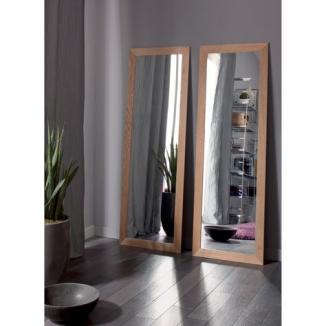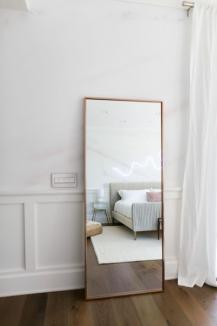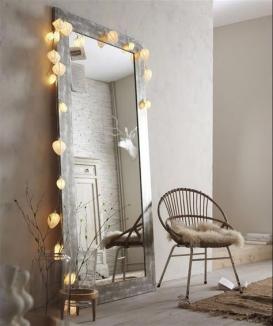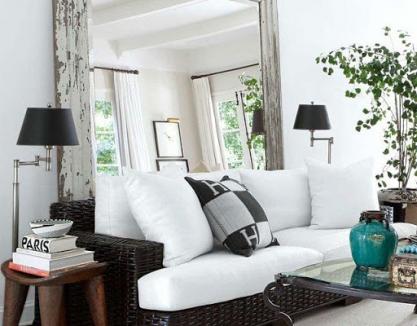Blog
Miroir mon beau miroir
1 - GIVE PREFERENCE TO NATURAL LIGHT
Natural light is undoubtedly the most pleasant.
To allow it to enter and spread whatever the size of your windows, here are a few simple tricks.
- CURTAINS
To let the light in, we go easy on the curtains! If your face-to-face is important, opt for thin, white curtains that can remain drawn all day without darkening the room.
In a room, if you want to block out the light in the morning but enjoy it the rest of the day, opt for light blackout curtains.
When installing the curtains, be sure to choose a rod that is wider than your window, so that when you open your curtains, they do not encroach on your windows!
- THE FURNITURE
To optimize the luminosity of a room, the same rule as for curtains: do not obstruct a window! Thus, choose the size of your furniture according to the space you have around the windows. If your piece of furniture arrives in front of your window, you will lose in brightness
When it comes to the furniture itself, prefer light-coloured furniture to reflective surfaces, such as lacquered surfaces. They will reflect light back into your room.
Finally, prefer low furniture that will let the light circulate and avoid overloading your room!
- FLOORS AND WALLS
As far as floors and walls are concerned, the rule is the same everywhere: prefer light colours.
For floors, however, be careful not to choose materials that will make your interior cold. For example, white tiles will tend to look too cold. On the other hand, a light-coloured parquet will make your room bright and at the same time give it a warm atmosphere.
2 - ARTIFICIAL LIGHT AS REINFORCEMENT
If your windows are not enough to make your interior bright, it is entirely possible to install light fixtures.
- GENERAL LIGHTING
Often in a room there is central lighting. The luminaire you choose will influence the brightness of the room. To diffuse the light as much as possible, prefer wide luminaires, ideally with an interior cladding that will reflect the light.
If you don't have a central light point, you can opt for a floor lamp with a halogen bulb. This type of bulb is the most powerful in terms of brightness.
- ACCENT LIGHTING
Spot luminaires are perfect to complement general lighting. Slide them into the corners of the room or onto furniture to add extra touches of light while making your home more welcoming. For this type of lighting, opt for low-energy bulbs, which give less light than a halogen bulb. Finally, if you want more intimate lighting, opt for LEDs!
1. Les formes et les types de miroirs
Tout d’abord pour ce qui est de la forme des miroirs, il existe de nombreux modèles. Qu’ils soient ronds, horizontaux, verticaux, carrés, hexagonales, etc. il y en a pour tous les goûts et pour tous les usages. Idem pour les styles : encadrement bois, aluminium, pvc ou laiton, sobre ou design, le choix ne manque pas.
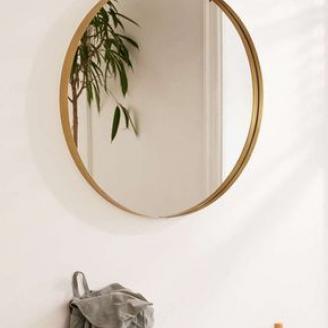
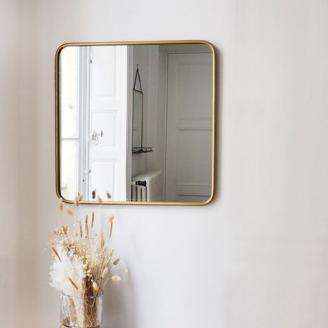
Si vous avez la chance d’avoir chez vous de vieux miroirs anciens, ne vous en séparez pas ! Ils sont aujourd’hui très recherchés dans la décoration, d’autant qu’il est difficile de trouver de belles imitations. En effet, le processus de fabrication des miroirs anciens était bien particulier, puisque le miroir étant créé avec du mercure (cette méthode n'est plus utilisée aujourd'hui). Aussi, si vous souhaitez rénover votre ancien miroir d’époque, adressez-vous à des professionnels, le mercure étant potentiellement dangereux.
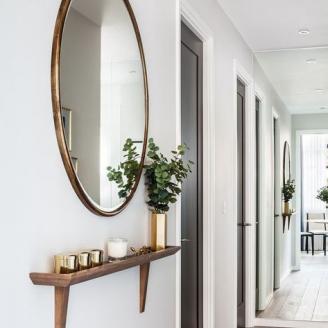
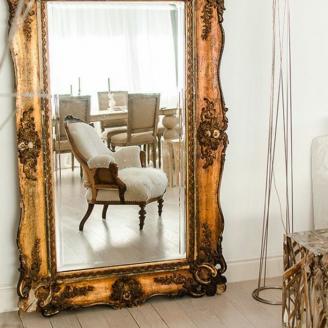
Enfin, si vous recherchez un très grand miroir pour couvrir un mur entier ou pour mettre au-dessus de votre meuble de salle de bain, vous pouvez parfaitement faire faire un miroir sur-mesure (et ce n’est pas si cher qu’on peut le penser !)
2. Les emplacements pour les miroirs
Pour installer votre miroir, vous avez principalement deux possibilités : soit l’accrocher au mur, soit le poser au sol. Si vous choisissez d’accrocher un miroir à un mur, ce dernier vous permettra d’uniformiser un pan de mur et d’agrandir l’espace tout en renvoyant la lumière (surtout s’il est positionné face à une source lumineuse !). En plaçant votre miroir au sol, vous obtiendrez un effet de reflet « penché » très apprécié dans la décoration (mais qui peut déformer une silhouette). Autre avantage, vous n’aurez pas besoin de percer vos murs. Le miroir posé au sol est en vogue en ce moment, pouvant faire office de « tableau » à part entière. Pour cet effet artistique, préférez un miroir ancien ou sur-mesure de grande taille.
